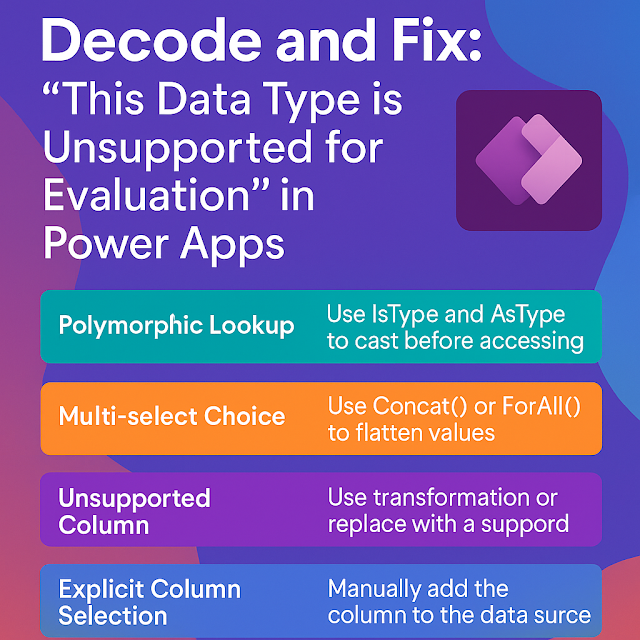Top 15 Dynamics 365 Admin Tips: Mastering Your Role Like a Pro
Being a Dynamics 365/CRM Administrator is more than managing users and customizations—it’s about ensuring stability, security, and scalability while empowering your organization. Whether you’re just starting or already a seasoned admin, this guide highlights 15 must-know tips to help you excel.
1. Master the Security Model
- Dynamics 365’s security model is layered and powerful. Learn how Business Units, Security Roles, Field-Level Security, and Teams interact.
Pro Tip: Use Teams for sharing access instead of assigning roles directly to users. This keeps permissions scalable.
2. Keep an Eye on Storage Limits
- Storage isn’t infinite. Monitor your Dataverse storage in the Power Platform Admin Center.
Clean up unused data, manage audit logs, and consider archiving or exporting old data to Azure for long-term storage.
3. Automate Routine Admin Tasks
Don’t waste time on repetitive admin tasks. Use Power Automate cloud flows for:
- Deactivating inactive users.
- Notifying admins about license or storage limits.
- Auto-assigning records based on business logic.
4. Use Solution Layers to Your Advantage
- Solutions are key for Application Lifecycle Management (ALM).
Always work within Unmanaged Solutions in development and export as Managed for production.
Understand how solution layering works to avoid unexpected overwrites during deployments.
5. Monitor System Jobs and Plugins
System jobs are a goldmine for troubleshooting. Regularly check for failed workflows, async plugin failures, and recurring errors.
Set up a dashboard for system job health for proactive monitoring.
6. Audit & Manage User Access
Regularly review user access with Audit Logs.
Deactivate users who no longer need access and keep your environment secure by syncing Azure Active Directory Security Groups.
7. Stay Updated on Release Waves
- Microsoft rolls out two major updates annually (Wave 1 in April and Wave 2 in October).
Subscribe to Dynamics 365 Release Planner and test new features in sandbox environments before production rollout.
8. Backup and Restore Like a Pro
- Never underestimate the value of backups.
Use Power Platform Admin Center to schedule regular environment backups. Document a restore plan so you’re prepared for emergencies.
9. Enable Environment Telemetry
Leverage Dataverse Environment Telemetry (via Azure Application Insights) for real-time insights:
- API calls
- Performance bottlenecks
- Error tracking
This helps developers and admins debug and optimize system behavior.
10. Document Everything
- Good documentation saves time and prevents mistakes.
Document:
- Customizations and workflows
- Integration endpoints
- Field usage and business rules
Tools like XrmToolBox’s Documentation Generator can automate some of this.
11. Educate and Support Your Users
- End-user adoption drives ROI.
Regularly conduct training sessions and create quick reference guides for your team.
12. Monitor API Limits
- API limits in Dataverse can sneak up on you.
Set up alerts for when you’re approaching thresholds, especially in high-integration environments.
13. Test in Sandbox Before Production
- Make sandbox environments your best friend.
Test every customization, workflow, and integration here first to avoid surprises in production.
14. Clean Up Unused Components
- Over time, forms, views, fields, and workflows can become obsolete.
Periodically review and remove unused components to keep your environment lean and performant.
15. Learn the Admin Tools Inside Out
Familiarize yourself with tools like:
- Power Platform Admin Center
- XrmToolBox (tons of helpful plugins)
- SolutionPackager and Package Deployer for ALM tasks
These tools can save hours of manual work.
Wrapping Up
Dynamics 365 Administration isn’t just about keeping the lights on—it’s about optimizing and future-proofing your CRM. By following these 15 tips, you’ll not only streamline your tasks but also enhance your value as a Dynamics 365 professional.
Start small, automate what you can, document everything, and stay proactive. Your users—and your future self—will thank you.












Comments
Post a Comment